In the event you watched the launch movies at Adobe MAX 2020 you most likely observed a couple of traits forming in the course of the product demos.
Cellular and social have been (and at all times might be) focal factors, however Synthetic Intelligence (AI) and Machine Studying (ML)—or Sensei as Adobe has chosen to model them—took the stage in quite a few shocking methods.
As at all times, a whole lot of the airtime was given over to Photoshop, which added a bundle of Sensei-driven instruments known as Neural Filters that embrace picture upscaling, sky alternative, and portrait growing old. However whereas turning the clock ahead in your face is enjoyable, and swapping that blown-out skyline with a inventory sundown makes a panorama prettier, it’s arduous to see a lot industrial worth in these instruments. For that, try to be wanting as a minimum talked-about AI characteristic in Premiere Professional—Speech-to-Textual content.
Let’s check out why you may want it, the way you would possibly use it, and whether or not or not this machine learning tool can augment your productivity.
We don’t speak about that
Let’s take a second to recall that this isn’t Adobe’s first try at releasing a software for changing recorded audio into editable textual content. Speech Evaluation was added to Premiere Professional again in 2013. It was…not nice.
After I examined it again then, the most effective description for the outcomes it produced could be word salad.
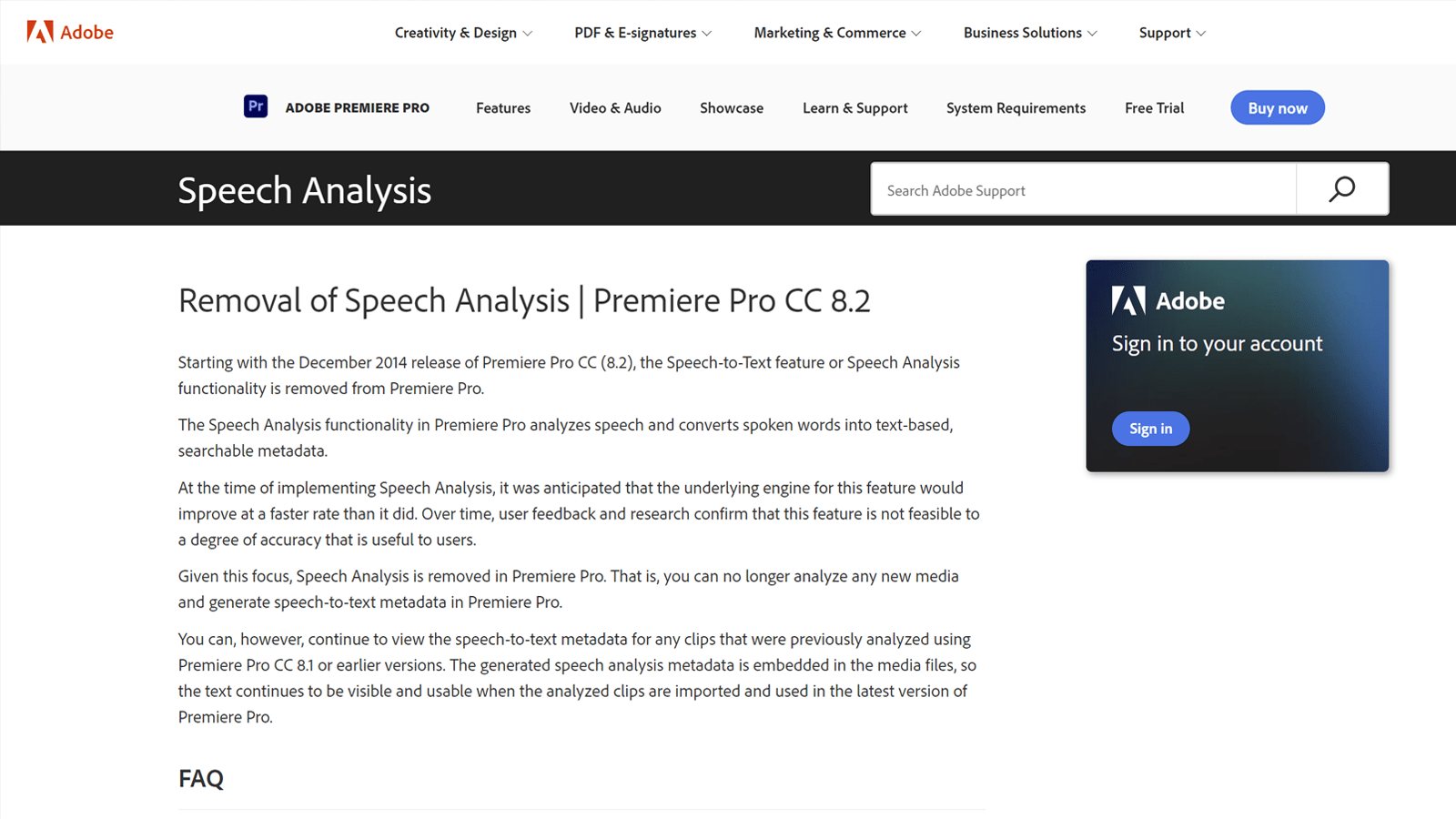
However to be honest, the identical was additionally true of different software program at the moment. Google’s auto-transcription for YouTube movies was simply as unreliable. As one commenter put it “in my expertise it does such a foul job that the time it’d take me to appropriate it’s significantly greater than the time it’d take me to transcribe it myself.”
And that, in a nutshell, was the issue. So it wasn’t actually shocking that Adobe pulled Speech Evaluation from public launch in 2014, and stayed silent on the matter till the fabulous Jason Levine introduced it again into the highlight in 2020.
Completely different strokes
The motivation for routinely producing captions is more likely to rely upon your enterprise perspective.
For instance, firms like Google and Fb need it as a result of it makes video indexable and searchable, permitting us to search out content material inside movies (and for them to promote advert slots primarily based on the context).
However for video producers and distributors, the necessity for captions might be coming from a different place.
Accessibility
The legal guidelines round accessibility are totally different the world over, however the closest we now have to a world normal are the Web Content Accessibility Guidelines (WCAG) revealed by the World Wide Web Consortium (W3C). It’s price noting that part 7.3 of the present WCAG signifies that media with out captions is deemed a vital error that routinely fails the ranking course of.
Within the US, the FCC has already made it a authorized requirement that all TV content broadcast in America should be closed captioned, and any subsequent streaming of this content material falls beneath the same rules.
And whereas it’s true that content material that’s uniquely broadcast over the Web falls exterior of those laws, laws together with the Americans with Disabilities Act (ADA) has already been efficiently used because the basis for lawsuits in opposition to streaming platforms like Netflix and Hulu.
So nowadays it’s most likely safer to imagine that captions are required by legislation within the nation/state the place you use than to search out out the arduous means.
Social Media
Whereas assembly accessibility necessities is a wonderful justification for captioning, it’s additionally helpful to audiences who don’t endure from listening to loss, particularly in relation to video in social media.
Muted autoplay is rapidly changing into the norm for video in scrolling social feeds, and it’s estimated that as a lot as 85 percent of video views are going down with the sound turned off. So if you wish to enhance the signal-to-noise ratio of your social media content material, captions at the moment are an important a part of the method.
It’s estimated that as a lot as 85 p.c of video views are going down with the sound turned off.
International attain
And for these of us working with international markets, it’s lengthy been identified that captions are the simplest technique to repurpose your movie and video content material for audiences who converse a unique language. (Definitely loads much less concerned than dubbing and ADR.)
Whereas some translation companies can work immediately from the unique media, providing a caption file within the authentic language may help to hurry the method up.
There are, in fact, other reasons why captions are rapidly changing into a vital part of media manufacturing, and it’s not simply due to the memes.
— no context the great place (@nocontexttgp) April 26, 2021
However whereas the wants would possibly change from enterprise to enterprise, the basic profit is similar—captioning your media will show you how to attain a bigger viewers. And that’s good for everybody.
Let’s begin the present
To get began, open the challenge to be captioned in Premiere Professional and have the goal sequence lively within the Timeline view.
Relying on the way you’ve structured your edit, a small quantity of preparation could be helpful earlier than transferring ahead.
For instance, if you happen to’ve laid out a number of vocals on separate tracks, or you probably have a mixture of vocals and SFX/music on the similar monitor, you need to spend a while tagging vocal clips as Dialogue utilizing the Important Sound Panel (you may as well select to mute any undesirable tracks on the Timeline if that’s simpler.) It will let Premiere Professional know which property to incorporate within the exported audio that it analyzes in a while.
Additionally, if you happen to don’t wish to create captions for the whole sequence, you need to set sequence In and Out factors by transferring the playhead to the required positions and hitting the I and O keys respectively. (Word that the Work Space Bar isn’t used for this characteristic.)
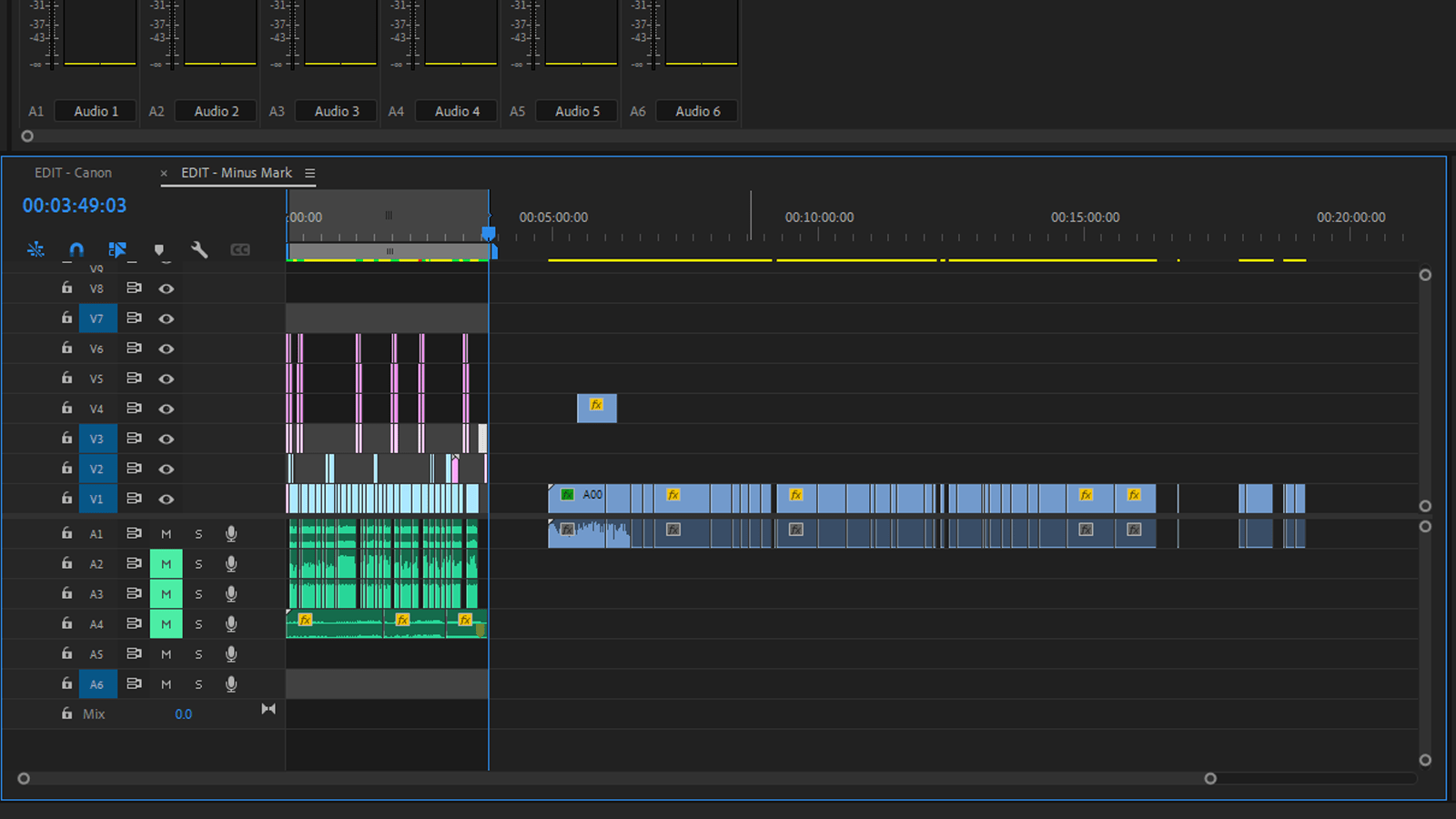
Once you’re prepared, open the Textual content window (Window->Textual content) and hit the Transcribe sequence button.
Your choices at this level are easy. You possibly can select to export a mixdown of simply the clips you’ve tagged as Dialogue, you possibly can choose Combine to create a mixdown of the whole sequence, or you possibly can choose a particular monitor to export from the drop-down menu.
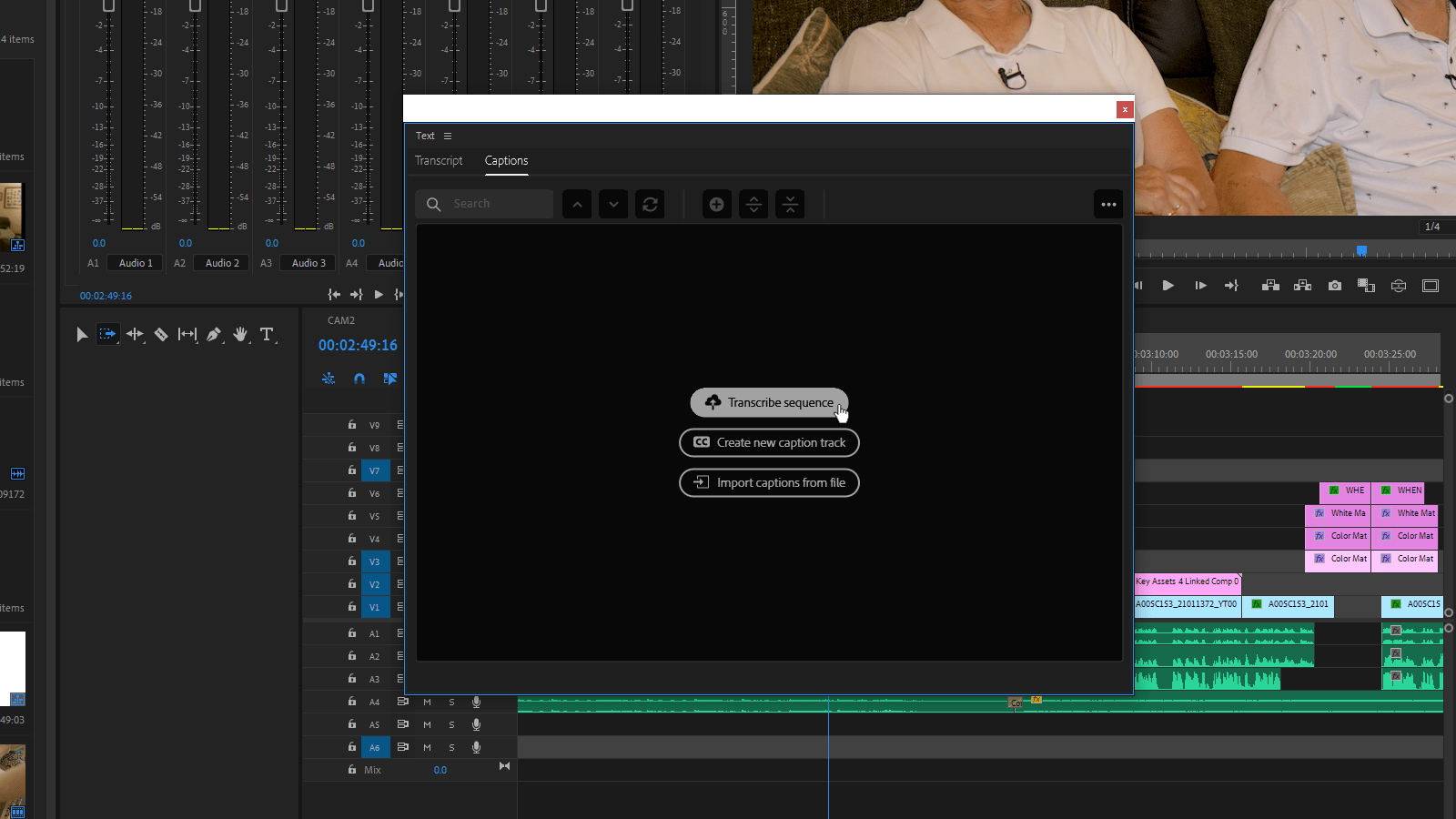
At current, there’s no technique to choose a number of audio tracks for the mixdown, which may very well be irksome you probably have a number of audio system on separate tracks. For now, simply mute the tracks you don’t wish to embrace and select the Combine choice.
Speech-to-Textual content helps a formidable collection of languages that covers a lot of the world’s inhabitants. Notable exceptions are Arabic, Bengali, and Indonesian, but it surely’s fascinating to see each US and UK variants of English. (As a UK ex-pat residing in Australia, the latter scores bonus factors with me.) Nevertheless, I can solely touch upon the effectiveness of the software in English.
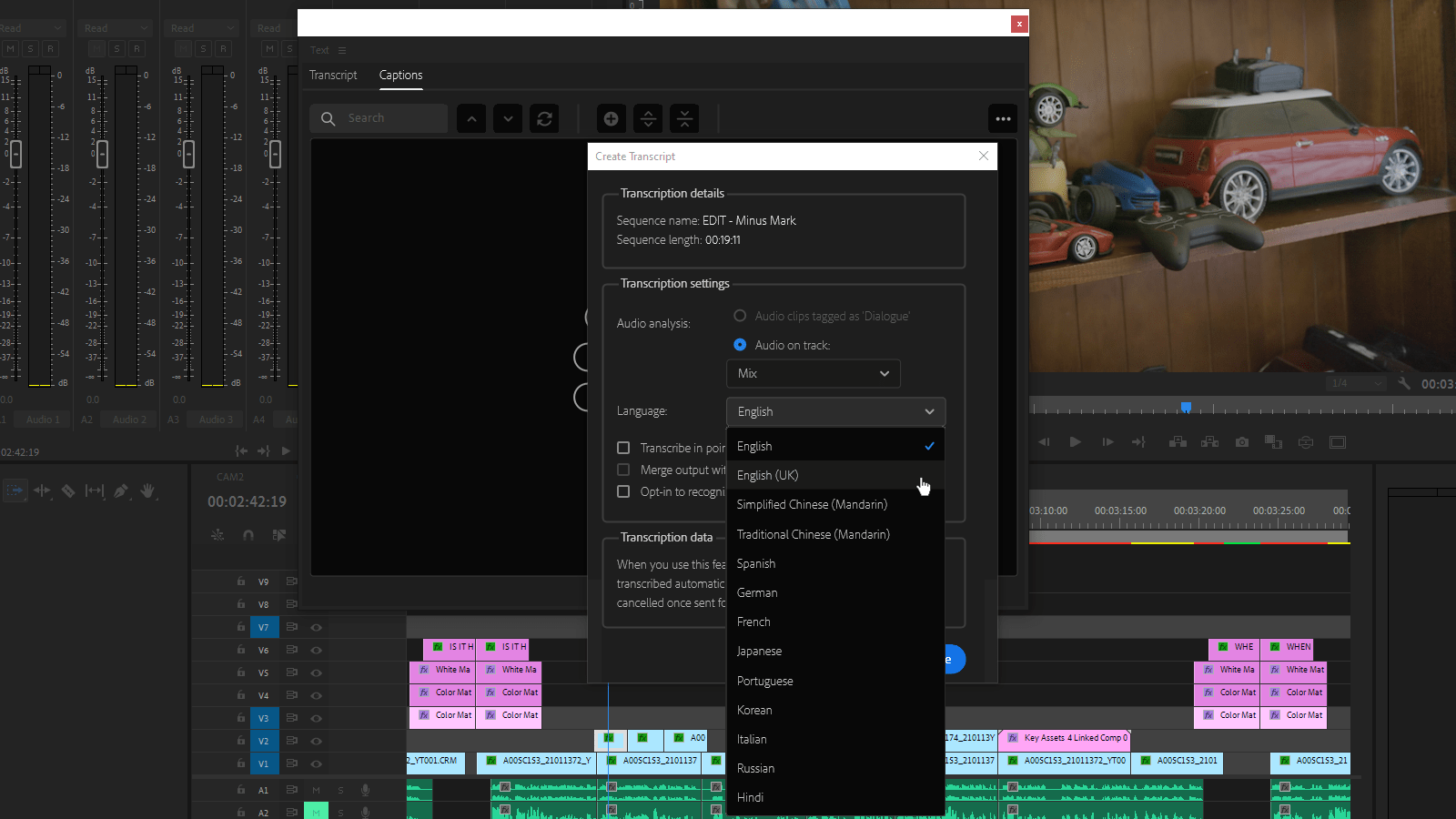
It’s fascinating to notice that Sensei’s capability to establish totally different audio system—which was the default habits within the beta—now requires consent, and isn’t accessible in Illinois, presumably as a result of privateness issues.
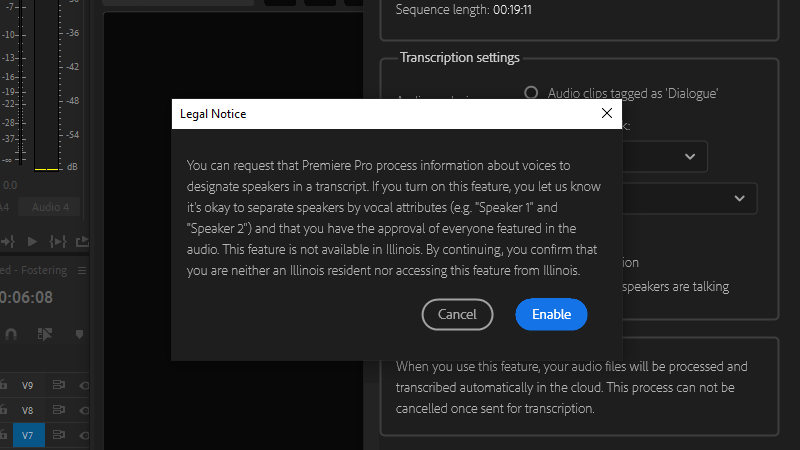
The transcription course of is comparatively quick, with a four-minute check challenge that includes twin audio system taking round two minutes, and an hour-long sequence taking 24min, which signifies a turnaround time of about half the runtime.
However Speech-to-Textual content is (principally) cloud-based and it’s inconceivable to foretell what speeds could be like if the whole Adobe Artistic Cloud membership instantly begins chewing up Sensei’s compute cycles on the similar time. That mentioned, even when job queuing turns into mandatory, you and your workstation will at the very least be free to make that espresso or meet up with different duties within the meantime.
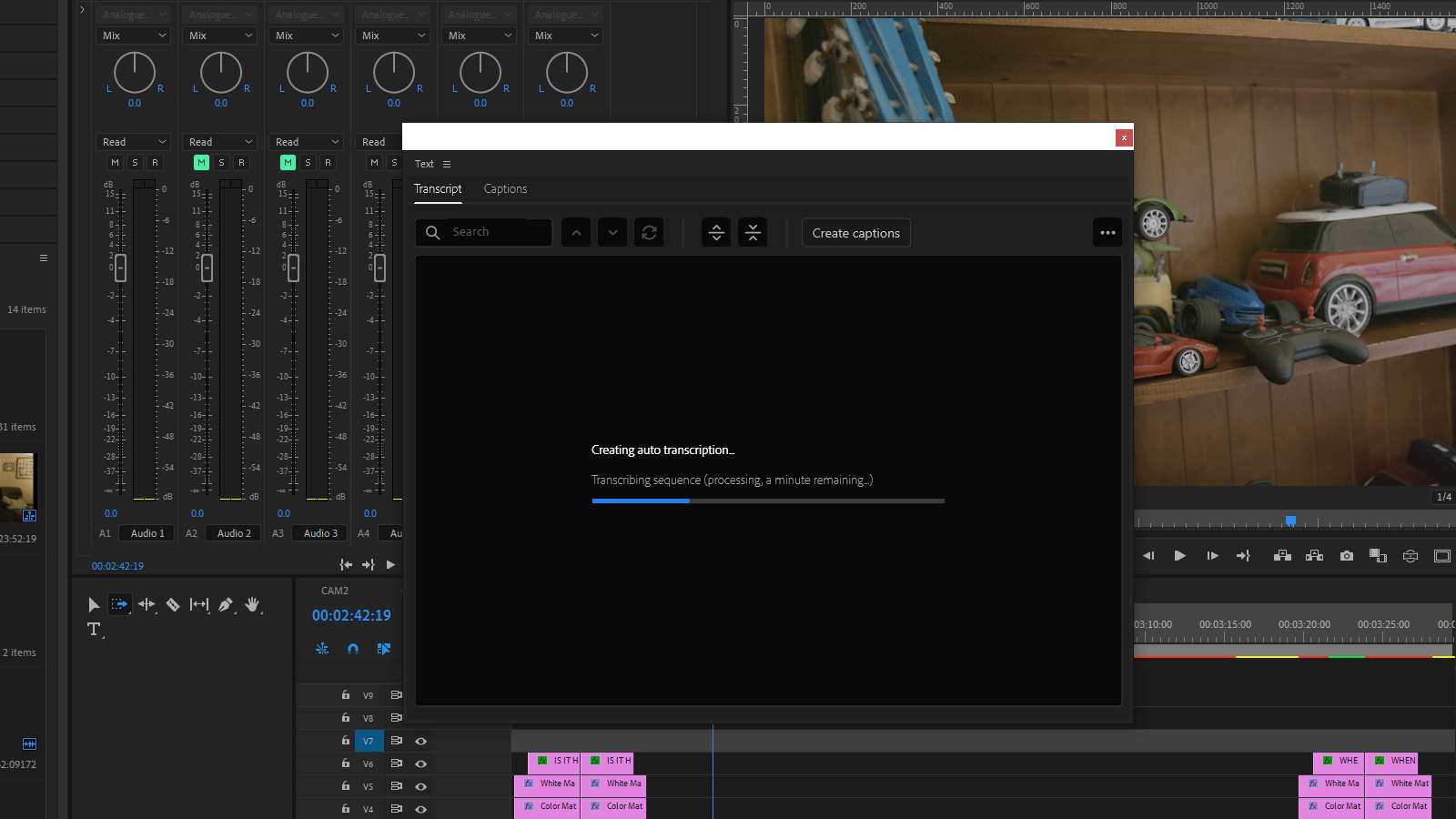
Get again to work
When Sensei is completed along with your audio, the Transcript tab of the Textual content panel might be populated with the outcomes.
And whereas your mileage could differ, I’ve to say that I used to be impressed with the accuracy of the assessments I ran. The beta model that I first examined was good—the general public model is even higher.
By opting into speaker profiling, Sensei acknowledges a number of audio system, figuring out them as Speaker 1, Speaker 2, and so on. In the event you opt-out, then it’s going to merely listing Unknown subsequent to the paragraph segments.
Both means, you possibly can title them by clicking on the ellipsis within the left column of the Transcript tab and deciding on Edit Audio system.
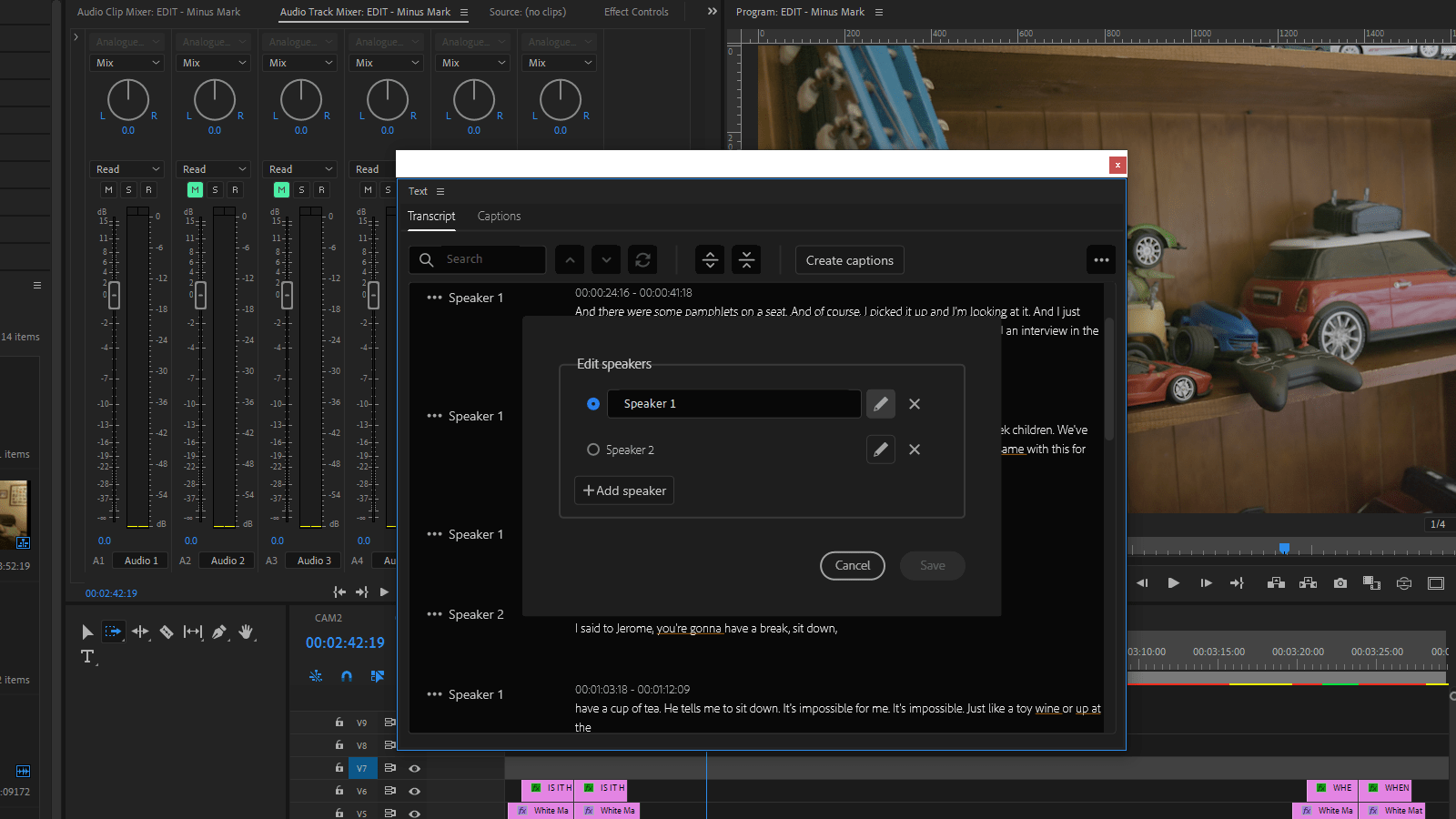
This software can allow you to manually repair situations the place Sensei could have incorrectly recognized audio system with similar-sounding voices, and it’s price taking the time to do that now earlier than transferring onto the caption creation stage.
The identical is true for transcript cleanup. Until you’ve been extraordinarily lucky along with your Speech-to-Textual content evaluation, there might be errors in your transcript. These are extra probably in recordings with a extra conversational supply, background noise, non-dictionary phrases like firm names, or a number of audio system speaking throughout one another.
“Until you’ve been extraordinarily lucky along with your Speech-to-Textual content evaluation, there might be errors in your transcript.”
And whilst you’ll have the ability to edit the textual content after it’s transformed to captions, you need to appropriate the transcript earlier than you get to the following step. It’s because Premiere Professional treats the transcript and subsequent captions as separate information sources—so making adjustments to at least one can have no impact on the opposite.
So take the time to get your transcript proper as will probably be the supply from which your entire captions might be created.
Getting round
Adobe has applied some extraordinarily helpful options that will help you navigate the video and transcript on the similar time.
To start with, Premiere Professional already has a Captions workspace that divides your display screen into Textual content, Essential Graphics, Timeline, Challenge Bins, and Program. Although you would possibly wish to tweak issues to fit your desire. For me, it appears like this…
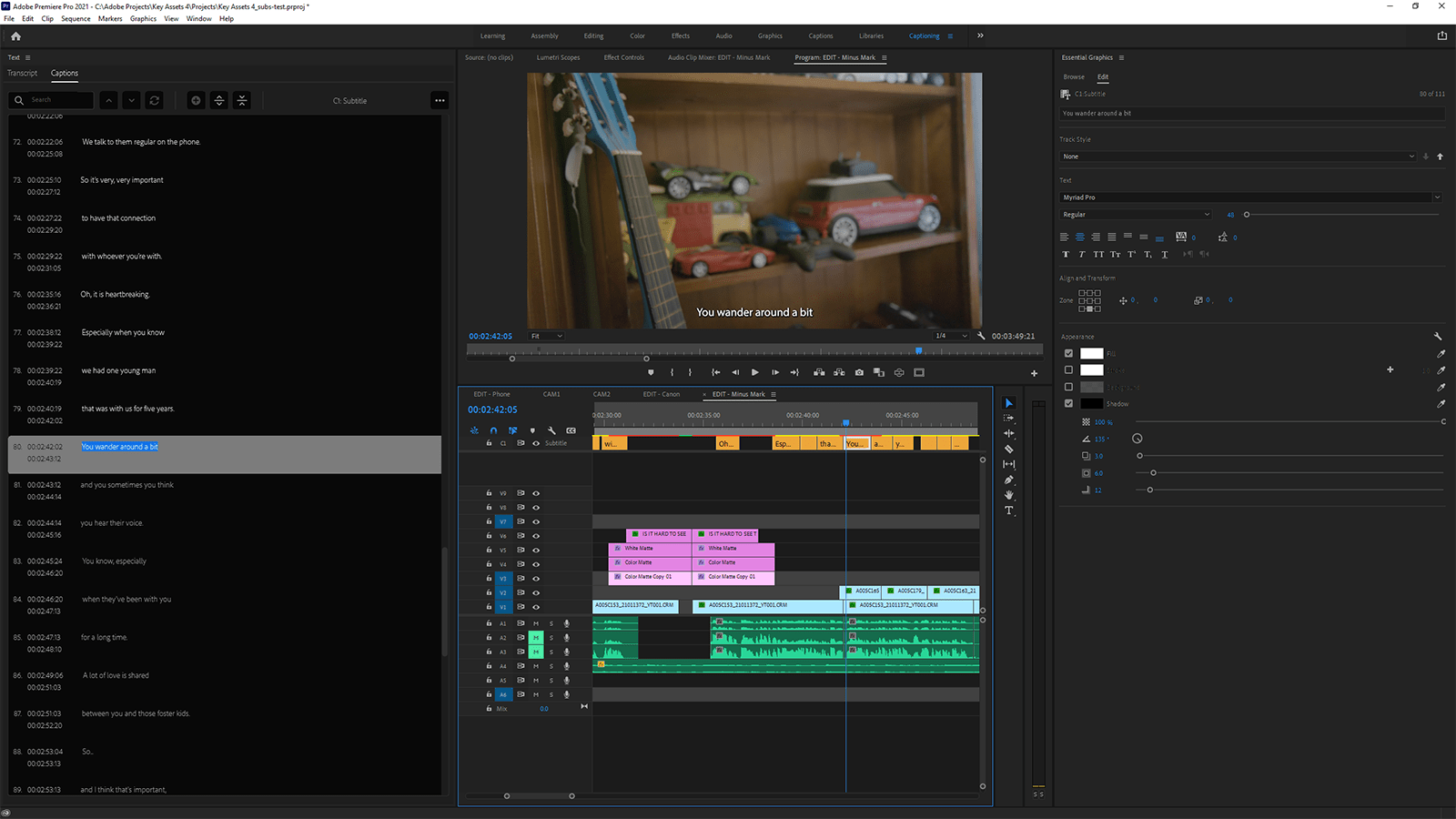
When you’re arrange, discovering your means round is easy.
For instance, transferring the playhead to a brand new place within the timeline will routinely cue the transcript to the corresponding location, to the extent that the phrase being spoken at that time beneath the playhead is highlighted blue within the Transcript panel. Any textual content that lies forward of the playhead place is coloured grey, which is a useful addition to the UX.
Equally, taking part in or scrubbing the timeline will replace the transcript view to maintain tempo with the playhead.
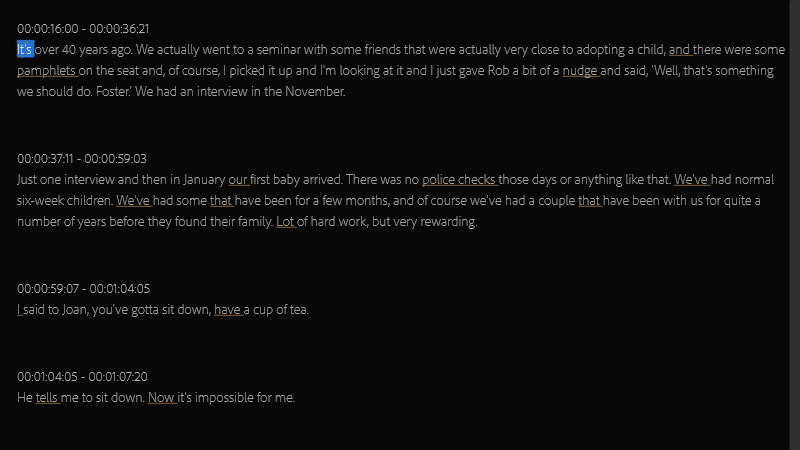
And it additionally works in reverse, so deciding on any phrase within the Transcript panel will routinely transfer the playhead and video preview to the corresponding time within the sequence. It may be a little bit gradual to reply at instances—presumably as a result of it’s speaking to Adobe’s servers—but it surely’s a extremely efficient method, nonetheless.
There’s additionally a Search field within the high nook, which helps you to bounce to phrases and phrases within the transcript, in addition to a Substitute operate ought to it’s worthwhile to repair repeated errors.
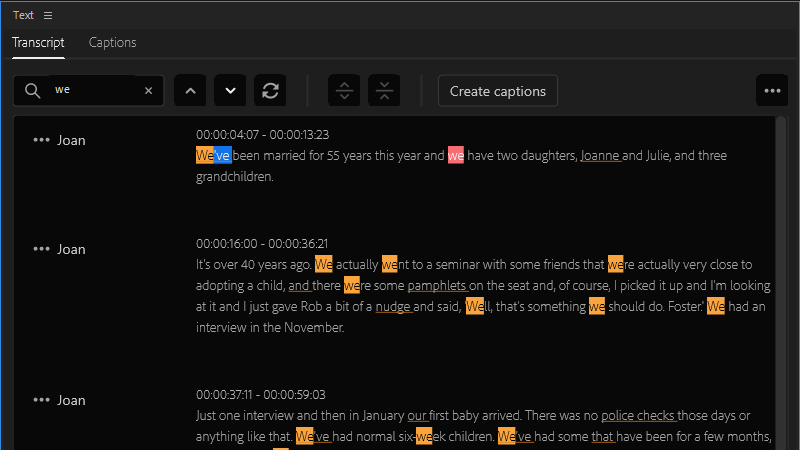
Finest observe
At this stage, you’ll most likely do most of your navigation within the Transcript panel; deciding on a phrase, hitting House to start out playback, evaluating what you’re listening to with what you’re studying, then stopping and double-clicking on the textual content to make any adjustments.
Primarily based on my expertise, your adjustments will almost definitely middle on punctuation and sentence construction, quite than fixing incorrect phrases. And regardless of Sensei’s finest efforts, you’ll nonetheless must put within the work to get issues to a caption-ready state.
And that is to be anticipated. Pure language processing is extremely arduous. After you think about accents, dialect, mannerisms, tone, and emphasis, even human beings wrestle with it. So anticipating good outcomes from a machine is unrealistic. (I’d strongly advocate you flip YouTube’s computerized captions on for the next video instance.)
(It is a nice different – https://youtu.be/Gib916jJW1o)
So method this stage with an open thoughts, a recent cup of espresso, and a comfortable chair. And if you happen to want steering on the most effective practices for caption creation, you would possibly wish to learn via the BBC’s subtitle guidelines, first.
Additionally, keep in mind that the transcript information is saved within the Premiere Professional challenge file, so you possibly can come again to it later if it’s worthwhile to. You can even export the transcript as a separate, however proprietary .prtranscript file, although it’s not clear what the advantage of this method could be.
Prepared?
Once you’re assured that your transcript is as clear as you can also make it, then go forward and hit the Create captions button.
You’ll be given a bunch of choices right here, together with the power to use Kinds (assuming that you simply’ve beforehand created some). You possibly can outline the utmost character size and minimal length of your captions, set them to Double or Single line, and even the variety of frames you wish to insert between them.
In the event you’re undecided what you need at this stage, I’d counsel that you simply choose the “Subtitle” format from the drop-down, guarantee that the Create from sequence transcript radio button is chosen, and go away the remainder at their default values.
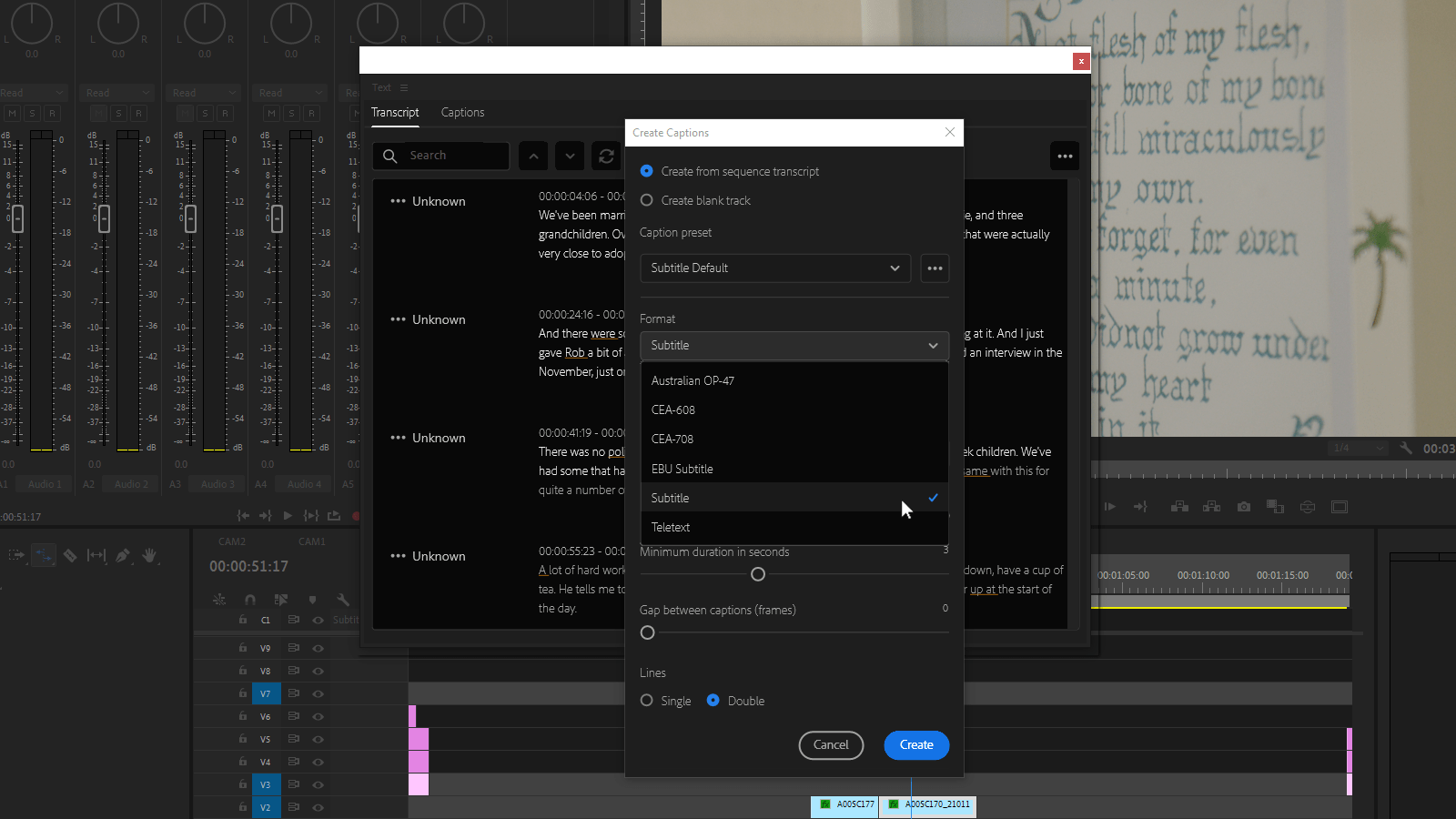
I’m not going to spend a substantial amount of time discussing the totally different caption codecs that Speech-to-Textual content provides. Partly as a result of I’m not an professional within the variations, and also you’ll know your challenge necessities higher than I do. However principally as a result of it doesn’t matter that a lot.
It’s because Premiere Professional’s Speech-to-Textual content retains your transcript information intact and provides your captions to a separate monitor within the sequence timeline. (It is a enormous enchancment over Premiere Professional’s first try at captions, which integrated the caption monitor into the video layer.)
Due to this, you possibly can generate captions in as many various codecs as you want. Even retroactively, ought to your challenge get offered right into a territory that makes use of a unique normal. There doesn’t look like a restrict on what number of caption tracks you possibly can add, and the format used for every caption monitor is clearly labeled.
If issues begin to get cluttered, you possibly can toggle monitor visibility utilizing the CC button within the timeline view.
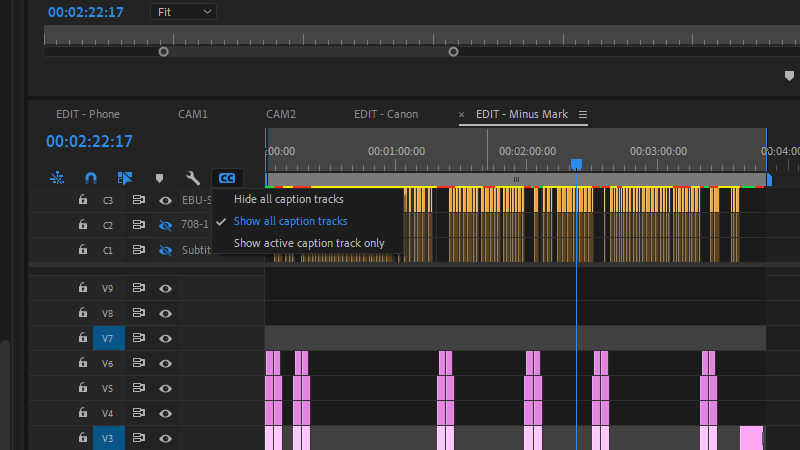
In the event you’re working with overseas language captions, this facet of the UI may very well be extraordinarily helpful, because it has the potential to allow you to construct caption layers for as many languages as you want in the identical sequence timeline. There are limitations to this method, which I’ll get to later, however talking from private expertise, I welcome this wholeheartedly.
So go forward and hit that Create button, and watch as your transcript is chunked up and specified by the format of your alternative.
One other spherical
In case you have any expertise in caption creation, you’ll know that good captions require a shocking quantity of finesse.
It’s not so simple as breaking the dialogue into sentences and displaying them on-screen for so long as it takes the speaker to say them.
“Punctuation is extremely necessary, and line breaks can imply the distinction between comprehension and confusion.”
It’s important to deconstruct what’s spoken into quick, intelligible sections that may be learn with out drawing an excessive amount of consideration away from the visuals. Punctuation is extremely necessary, and line breaks can imply the distinction between comprehension and confusion. And to be honest, Speech-to-Textual content appears to do an affordable job of this.
Nevertheless, to adjust to captioning requirements just like the FCC’s, it’s worthwhile to convey noise and music to the fullest extent attainable. And whereas it’s unreasonable to count on Sensei to start out labeling noises and music (for now, at the very least), your captioning software program ought to assist you to incorporate info past dialogue.
Separately, please
Sadly, Speech-to-Textual content is restricted to a single monitor with no scope for overlapping parts.
Because of this there’s no technique to simply incorporate simultaneous audio system or add sound or music identifiers over dialogue. (I attempted including these to a second caption monitor, however you possibly can solely allow visibility for one monitor at a time.)
So if FCC compliance is required on your challenge, then you definately would possibly want handy this job off to a unique caption answer. However even then, you may nonetheless use Speech-to-Textual content to get you a lot of the means, then export the outcomes to a textual content or SRT (SubRip) file for import into a unique software.
Cut up the distinction
When you get all the way down to the enterprise of enhancing the captions generated by Speech-to-Textual content, Premiere Professional’s workflow makes a whole lot of sense.
Sentences are damaged into quick, single-line segments that can match on even the smallest of screens with out line-wrapping. And you may select to merge or cut up these additional in the event that they don’t fairly work of their present state.
Including new captions can also be attainable, assuming that there’s area to take action (the default for the inserted caption is three seconds, and you may find yourself overwriting present captions if you happen to’re not cautious right here).
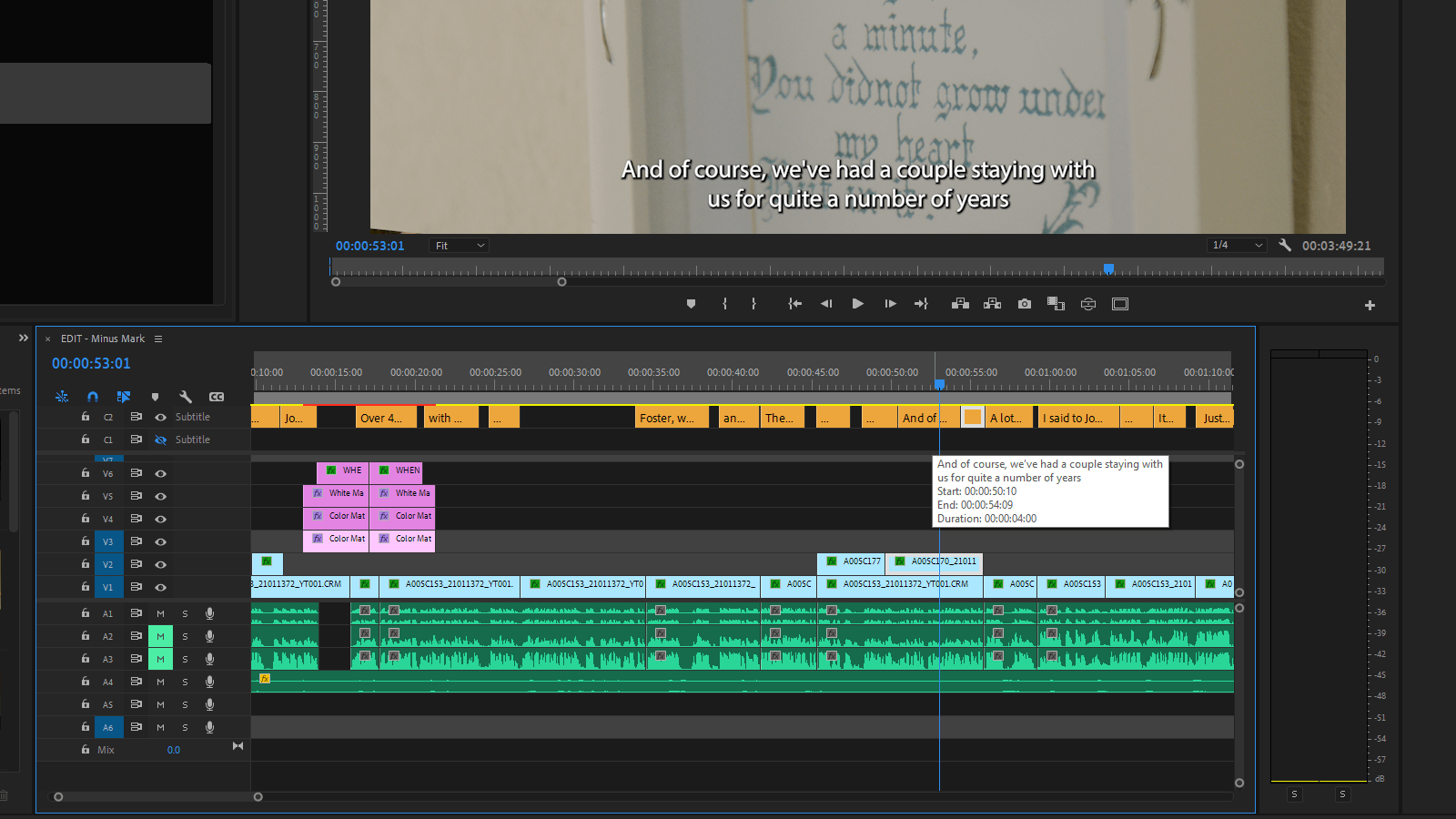
Captions additionally behave like every other asset within the timeline. So you possibly can modify their In and Out factors by dragging clip handles, hyperlink them to video clips, cut up them with the Razor software, and even carry out slip, slide, ripple, and roll edits.
So if you happen to already know your means across the Premiere Professional toolset, your present abilities will stand you in good stead right here.
Fixing it in post-post
There may be, nonetheless, a monitor enhancing limitation that’s distinctive to captions.
Whilst you can choose and manipulate a number of video, audio, or picture tracks on the similar time, just one caption monitor might be lively at any time. If it’s worthwhile to modify a number of caption tracks in numerous codecs, you’ll must do it one monitor at a time.
However this seems like splitting hairs. Provided that the captioning course of usually takes place lengthy after the edit is locked and authorised, the necessity to make adjustments throughout a number of caption codecs ought to be a fringe state of affairs.
Open or closed?
Premiere Professional provides a variety of formatting instruments on your captions, together with the power to avoid wasting types and apply them to future initiatives.
You possibly can modify font, shade, shadow, define, and background choices, in addition to place, textual content alignment, and usable caption space. And these might be assigned to particular person captions, or throughout the whole caption monitor.
Closed captioning
However the extent to which you’ll be able to change the looks of your captions relies on whether or not you propose to deploy them as open or closed.
Closed captions are saved as separate recordsdata—often known as sidecar recordsdata—and might be toggled on and off by the viewer throughout playback.
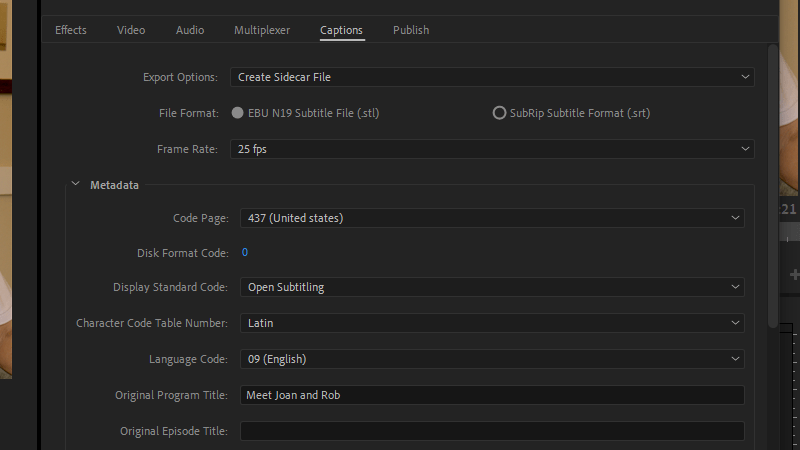
Many of the formatting for closed captions is dealt with by the playback system, so formatting choices are restricted (and Premiere Professional will solely show features which can be supported by your chosen caption format). However, regardless of the title, closed captions are simpler to alter after being finalized as they’re often a easy textual content or XML file.
Open captioning
In distinction, open captions are “burnt in” to the video, so that they’re at all times seen (whatever the playback platform or machine) and you may format them nonetheless you see match.
It additionally means that you would be able to create a single model of the captioned video that can play on all video platforms.
However the trade-off right here is that your captions can’t be modified with out re-rendering and redistributing the whole video. And, if you happen to’re working with a number of languages, you’d must create fully new movies for every language as an alternative of a extra manageable set of caption tracks.
It’s additionally price noting that open captions will resize together with the video, so in case your viewers is a chunk of 16×9 media in portrait view on a cell machine, there’s an opportunity that your captions would possibly develop into too small to learn.
On this foundation, you would possibly suppose there’d be no compelling cause to go for open captions in your video content material. However if you happen to’re publishing to social media, then you definately may not wish to depend on the automated captioning instruments which can be presently your solely choice on platforms like Instagram or TikTok.
Additionally, some social platforms solely assist you to add captions concurrently you add the video, which makes scheduling or auto-posting video content material with captions inconceivable. So open captioning can nonetheless be a viable choice.
| YouTube | Fb | TikTok | |||
| Add captions | Y | Y | Y | Y | N |
| Auto-generate captions | Y | Y | N | N | Y |
| Schedule captioned video | Y | Y | N | N | N |
Ending up
Wanting on the present model, it appears as if your export choices have been diminished to EBU N19 or plain textual content SubRip SRT file—the MacCaption VANC MCC format and Embed in output file choice discovered within the beta are not accessible.
This isn’t as limiting because it sounds, although, as EBU serves most streaming and broadcast companies, and SRT covers most on-line and social video platforms.
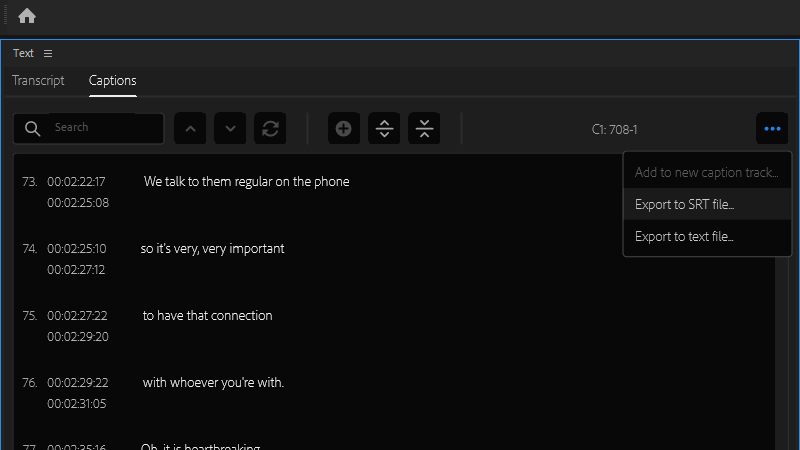
What we’re not seeing is the power to export solely the caption monitor from Premiere Professional’s export software or Adobe Media Encoder, so it’s worthwhile to render out at the very least an audio file with the intention to get an XML caption file.
Given that you would be able to export to .srt and .txt recordsdata from the Captions panel, this appears odd, and appears more likely to change sooner or later.
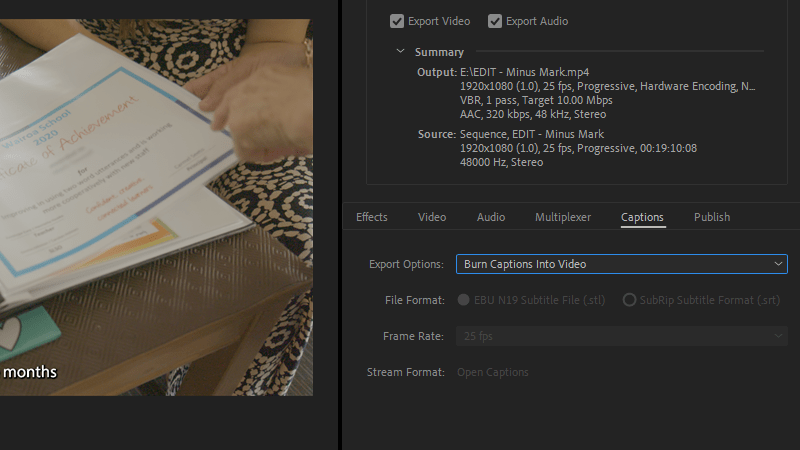
In order for you open captions, you possibly can simply choose the Burn Captions Into Video choice. And naturally, if you wish to create a number of exports in numerous codecs, you possibly can queue them up in Adobe Media Encoder for batch export. Simply just be sure you set the required caption monitor’s visibility within the timeline first.
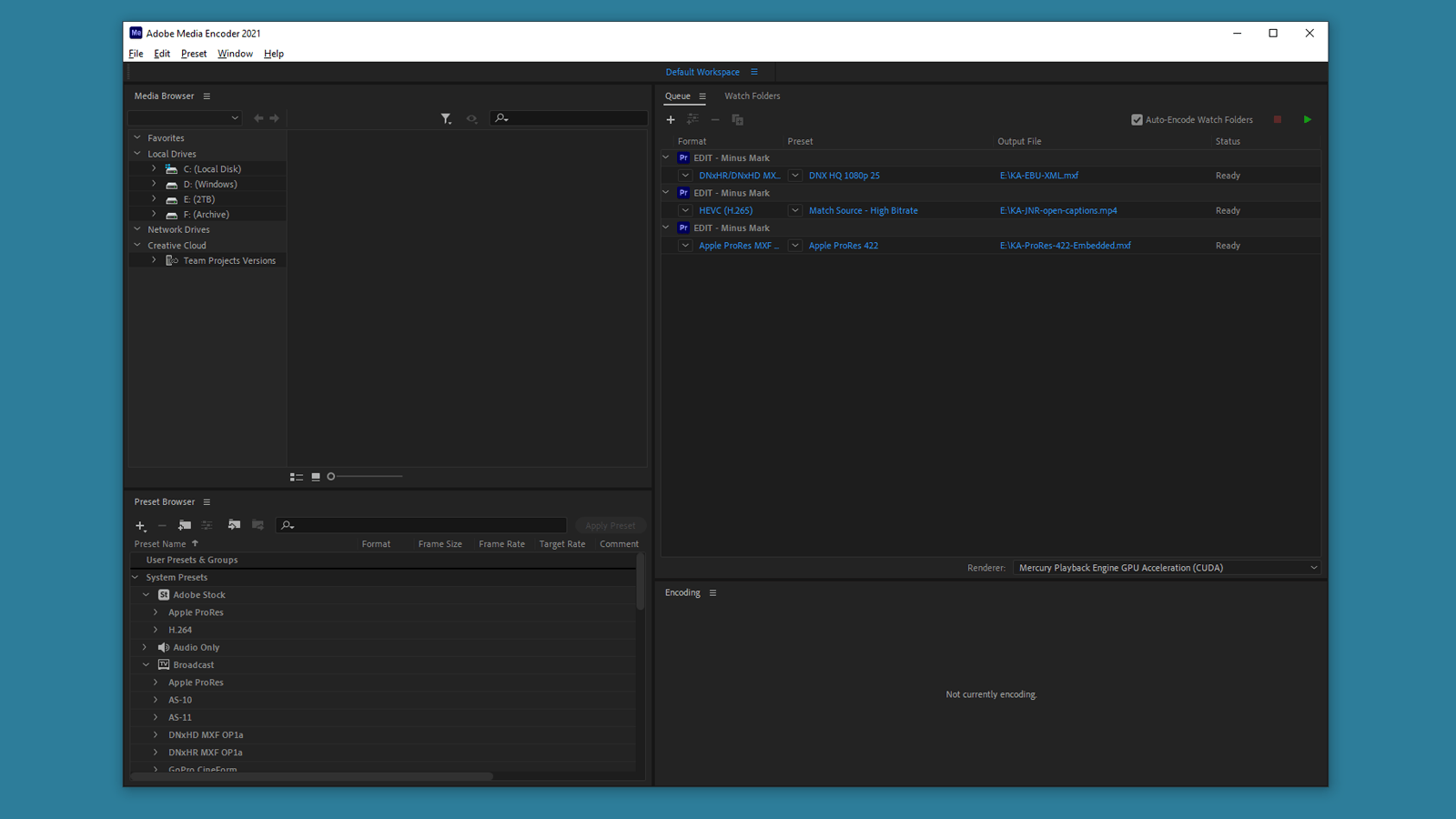
What’s lacking?
Whereas testing the beta, I famous some areas the place Adobe would possibly enhance this software earlier than releasing it to the general public and, with one small exception, they’re nonetheless “lacking.” So right here’s my wishlist:
- Adjustable font measurement within the Transcript and Captions panels.
The textual content measurement is presently outlined by the system settings, and there are occasions I wished to dial the font measurement as much as make issues simpler to learn whereas enhancing the transcript. - Script import.
In the event you’re working with scripted materials, then Speech-to-Textual content may, in concept, skip the transcription course of and concentrate on timing, as an alternative. This might assist you to rapidly convert what you have already got right into a caption-ready format. (YouTube already has this.) - Customized formatting primarily based on speaker.
Whilst you can establish the audio system within the transcript, there’s no technique to routinely add that information to your captions. And if you happen to’re captioning scene by scene, it could be helpful to have customized caption placement for audio system who’re at all times going to be on a selected facet of the body.
However is it price it?
I can’t say what your expertise with Premiere Professional’s Speech-to-Textual content could be.
Is it one-button automation for all of your captioning wants? In fact not. And I imagine we’re nonetheless a good distance from constructing a system that may deal with this advanced and infinitely variable job with out some type of human intervention.
However for me, this software turned a normal inclusion in my toolkit earlier than it even left beta.
If pressed, I’d estimate that it’s lower the time it takes to caption content material to a few third of what it was earlier than. It’s not the one choice accessible—Otter.ai will export transcripts to the .srt caption format, Digital Anarchy has a Premiere Professional plugin known as Transcriptive, and naturally, you possibly can pay firms to do the job for you—however all of those have a price part, whereas Speech-to-Textual content is presently free to make use of.
All of it comes again to that remark I included initially of this text—is it simpler to make use of Speech-to-Textual content than it might be to transcribe it your self? For me, the reply is a really agency sure. So if you happen to’re discovering a greater means so as to add accessibility and higher viewers engagement to your video initiatives, Premiere Professional Speech-to-Textual content is certainly price a glance.
(And if you happen to’re in search of extra content material on working with audio in Premiere Professional, take a look at Premiere Pro Mixing Basics and Premiere Pro Audio Tools.)















Leave a Reply